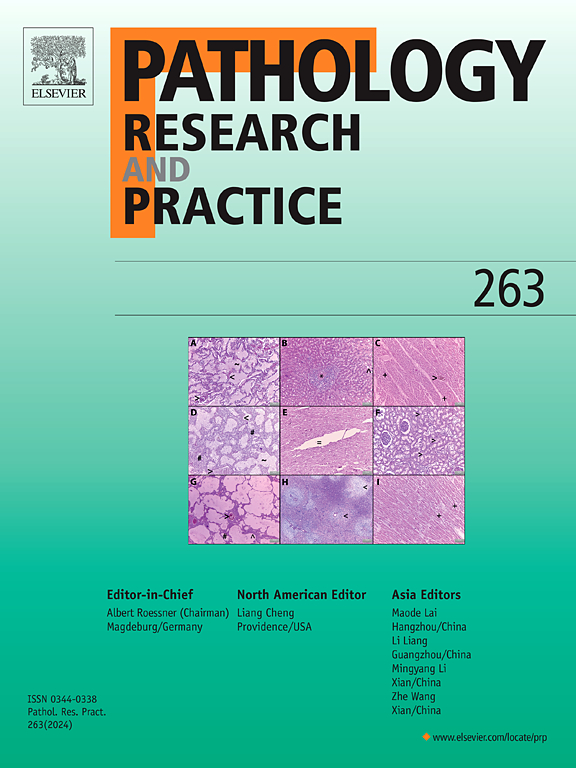Triptolide's impact on ACER1 signaling: Inducing autophagy for triple-negative breast cancer suppression
IF 2.9
4区 医学
Q2 PATHOLOGY
引用次数: 0
Abstract
Given the absence of estrogen receptor (ER), progesterone receptor (PR), and human epidermal growth factor receptor-2 (Her-2) in triple-negative breast cancer (TNBC) cells, the efficacy of targeted therapies is limited. In this study, we uncovered that triptolide (TP) effectively suppresses the migration and invasiveness of MDA-MB-231 cells by activating autophagic pathways. Western blotting analysis revealed that TP significantly reduced the expression levels of p62 protein, while simultaneously markedly increasing the expression levels of LC3B-II, BNIP3, BNIP3L, ATG5, and ULK1 proteins, strongly suggesting an enhancement of autophagic activity in the cells. Based on PCR array screening, we identified the ACER1 gene as exhibiting notable expression alterations post-TP treatment. Overexpression of ACER1 gene enhanced the TP-induced apoptosis in MDA-MB-231 cells and augmented the regulation of autophagy-related proteins p62 and LC3B-II, leading to an increase in autophagosome numbers and a marked reduction in cellular migration and invasiveness. Conversely, ACER1 gene knockdown reversed these effects. In vivo experiments demonstrated that TP effectively inhibits the growth of MDA-MB-231 xenograft tumors, concurrently upregulating ACER1 and LC3B-II expression in tumor tissues, while p62 protein levels were notably decreased. Hematoxylin and eosin (H&E) staining results indicated no evident toxicity in liver and kidney tissues of BALB/c mice at a TP dose of 0.4 mg/kg. This study, for the first time, elucidates a novel mechanism by which TP inhibits TNBC through an autophagic process mediated by ACER1.
求助全文
约1分钟内获得全文
求助全文
来源期刊
CiteScore
5.00
自引率
3.60%
发文量
405
审稿时长
24 days
期刊介绍:
Pathology, Research and Practice provides accessible coverage of the most recent developments across the entire field of pathology: Reviews focus on recent progress in pathology, while Comments look at interesting current problems and at hypotheses for future developments in pathology. Original Papers present novel findings on all aspects of general, anatomic and molecular pathology. Rapid Communications inform readers on preliminary findings that may be relevant for further studies and need to be communicated quickly. Teaching Cases look at new aspects or special diagnostic problems of diseases and at case reports relevant for the pathologist''s practice.
文献相关原料
公司名称
产品信息
索莱宝
glutaraldehyde
索莱宝
penicillin/streptomycin

 求助内容:
求助内容: 应助结果提醒方式:
应助结果提醒方式:


